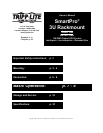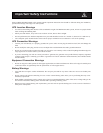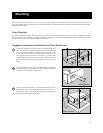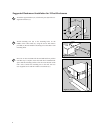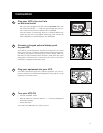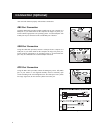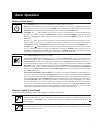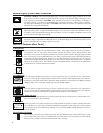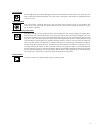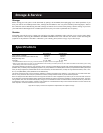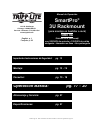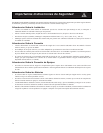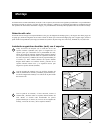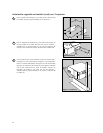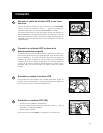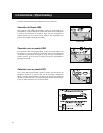
7
Buttons (Front Panel)
Use the POWER button to switch your UPS between its four modes of operation.
OFF: No indicator lights are on. The UPS is completely shut down for storage or shipping. If the UPS is
connected to AC power, it will start up in STANDBY mode. If the UPS is not connected to AC power and the
POWER button is pressed for two seconds, the UPS will “cold start” into INVERT mode.
STANDBY: The “ ” light is flashing. The UPS is receiving AC power and using it to charge its batteries, but
its outlets are not active. Pressing the POWER button while the UPS is in STANDBY will put the UPS in the
ON mode. Unplugging the UPS or cutting AC power while the UPS is in STANDBY will put the UPS in the
OFF mode.
ON: The “ ” light is on. The UPS is receiving AC power, charging its batteries and delivering power to con-
nected equipment. If AC power is lost while the UPS is ON (i.e. a blackout occurs), the UPS will switch into
INVERT mode. Pressing the POWER button while the UPS is ON will put the UPS in STANDBY mode.
INVERT: The “ ” light is flashing. The UPS is powering connected equipment from battery backup. If AC
power is restored, the UPS will switch to the ON mode. Pressing the POWER button while the UPS is in
INVERT will put the UPS into the OFF mode. If the UPS is in INVERT and its batteries are drained, the UPS
will switch to the OFF mode until AC power is restored, then switch to the ON mode.
Use the MUTE/TEST button to do two things:
SILENCE ALARM: Your UPS has three alarms. The first, the INVERT alarm, emits four short beeps every
ten seconds when the UPS is in INVERT mode, to warn you that AC power has failed. The second, the
OVERLOAD alarm, emits short, rapid beeps when the UPS is in INVERT mode if the total power draw of
connected equipment exceeds the UPS’s output capacity, to warn you to reduce the load. The third, the LOW
BATTERY alarm, emits a constant beep when the UPS is in INVERT mode and its batteries are very nearly
depleted, to warn you that connected equipment must shut down. To silence the INVERT or OVERLOAD
alarms, press the MUTE/TEST button. The LOW BATTERY alarm will only stop when the UPS switches
to the OFF or ON mode.
SELF-TEST BATTERIES AND ALARMS: If your UPS is in the ON mode and has a load connected, you
may test its batteries by pressing the MUTE/TEST button for two seconds. The UPS will switch to INVERT
mode for several seconds. Normally, the INVERT alarm (four short beeps) will sound, indicating that the sys-
tem is working properly. If the OVERLOAD alarm (short, rapid beeps) sounds, reduce the load on the UPS. If
the LOW BATTERY alarm (a constant beep) sounds, your UPS’s batteries may need replacing, your external
battery connection may be loose or the batteries may simply be less than fully charged. Check the external bat-
tery connection, let the UPS charge for 12 hours, then perform a second self-test. If the LOW BATTERY alarm
sounds again, contact Tripp Lite for service. Do not unplug your UPS to test its batteries, or you will remove safe
electrical grounding and may introduce a damaging surge into your network connections.
Indicator Lights (Front Panel)
All Indicator Light descriptions apply when the UPS is plugged into a wall outlet and turned ON.
POWER: Lights green when the UPS is receiving AC power. Illuminates constantly when the UPS is in the
ON mode, indicating that batteries are charging and connected equipment is receiving filtered AC power.
Flashes while in STANDBY mode to indicate that batteries are charging but connected equipment is not
receiving power.
VOLTAGE CORRECTION: Lights green whenever your UPS is automatically correcting high or low AC
line voltage. The UPS will also click gently. These are normal, automatic operations of your UPS, and no
action is required on your part.
Basic Operation



